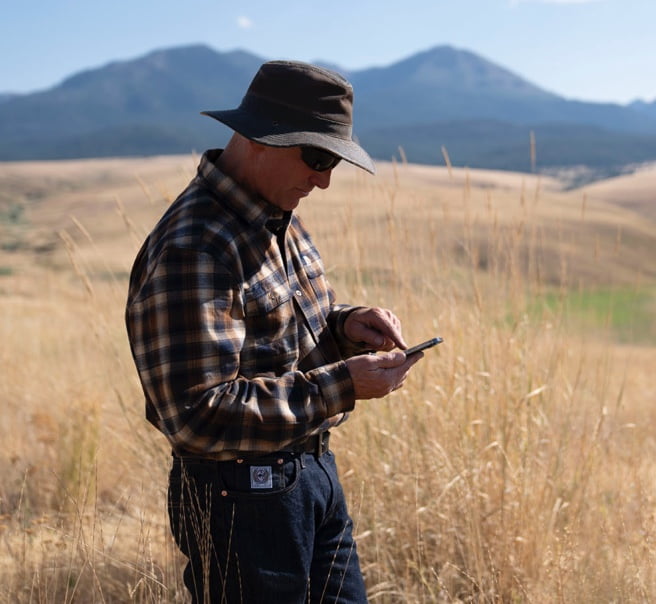Harnessing Digital Technologies for Environmental Sustainability
Industry experts discuss trends in herbicide innovation
We recently brought industry experts together for a panel discussion called “Harnessing Digital Technologies for Environmental Sustainability.” The group discussed innovations for restoring rangelands devastated by invasive winter annual grasses, the correlation between increased transparency and sustainability, and other topics.
The 60-minute panel discussion is free to watch on the Envu Vegetation Management YouTube channel.
Below are two key takeaways from this important event:
- Western U.S. rangeland is under attack by invasive grasses, but new solutions are helping to combat the threat.
Cheatgrass is one of the most common invasive grasses in the U.S., and its rapid growth in late winter and early spring allows it to steal vital moisture and nutrients from native perennials. “These are typically semiarid systems, so this essentially puts the native perennials into a state of permanent drought,” says Harry Quicke, Envu senior science fellow and stewardship manager. “With the annual grass invasion, we decrease diversity, degrade wildlife and pollinator habitats, and have lower soil carbon. Because of degraded grazing, we also reduce livestock productivity.”
Once invasive grasses take hold, native perennials are permanently lost. Recent research shows that in the Great Basin alone, 590,000 acres (240,000 hectares) per year are lost to annual grass dominance. As if that’s not daunting enough, the invasive grasses develop a prolific number of seeds that are added to the seed bank every year. They also increase the threat of wildfire by dying back in summer and providing easily ignitable fine fuel.
Fortunately, vegetation managers have some new solutions for controlling annual grasses. Rejuvra® herbicide is a highly selective preemergence herbicide that controls germinating annual grasses without impacting the native perennial population. It also provides up to four years of control with a single application to allow perennial native plants to recover and regain lost resources.
“Vegetation managers can combine this herbicide solution with the RangeView™ digital platform, which uses remote sensing to identify invasive grass infestations,” Quicke explains. “This allows for more targeted treatments and helps to increase biodiversity and improve livestock production and wildlife and pollinator habitats. It’s also been shown to decrease the threat of wildfires.”
- Invasive grasses pose a tremendous challenge to ranchers, who are seeking new tools to revive and scout landscapes.
Fires, monocultures and a transition from native perennials to very damaging invasive annual grasses have become an all-too-common reality for ranchers like Erika Fitzpatrick, who works with her husband and family on a fourth-generation ranch in remote Eastern Oregon in the United States.
“We deal primarily with an aggressive invader, medusahead, that is almost entirely unpalatable to livestock and wildlife,” Fitzpatrick says. “As it crowds out other forages, we’re transitioning to a landscape that’s unusable, and that’s certainly not good for the ecosystem and for wildlife that depend on it.”
While Fitzpatrick has long deemed this environmental challenge “almost hopeless,” she’s excited about a new solution to combat these invaders: Rejuvra herbicide. “We’re excited by the results we’ve seen, including the elimination of invasive grasses and a wonderful transition back to strong and vibrant perennials,” she says.
Unfortunately, Fitzpatrick faces other environmental challenges as well. “This ranch alone spans about 250,000 acres (100,000 hectares), so it’s difficult to get a sense of what’s going on with the vast and rugged landscape,” she says.
While scouting the ranch by ground can be expensive and time-consuming, digital technologies and remote sensing tools like RangeView digital platform by Envu give ranchers a more accurate picture of the landscape. “This helps us identify areas we want to target and implement economical strategies to maximize our chance of success,” says Fitpatrick. “Digital technologies are essential, and we’re seeing great results with them.”

